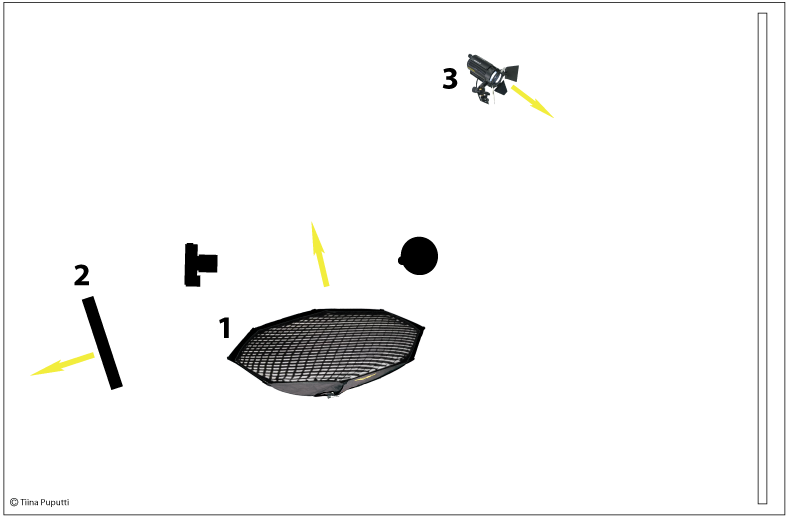Last Saturday I had photography workshop in cooperation with Audico Systems. Theme of the workshop was how to use continuous light sources in portraiture.
I find as main advantage of continuous light sources that you can see light all the time you’re shooting. So what you see through viewfinder will be same in final image.
To be able to see light all the time you’re shooting makes it easier if you compare it to use of flash. But it’s not that simple.
Whether you use flash or continuous light sources you still need to understand about light and lighting. I think you need to understand f.e. how to place and point light sources in relation to subject, how to to decide brightness of light sources (f.e. main light, kicker…), how to control contrast – all these basics of lighting which every photographer has to take care apart from which light sources he/she uses.
And of course you need to understand about rhythm of light and shadow. My favorite subject 😀
Among technical points of view I wanted to demonstrate to participants also about visual and storytelling points when you’re shooting people:
- differences in methodology: how to shoot people in stable lighting condition (studio) or in location with natural or available light –> in studio photographer builds all lighting and he/she can control it too
- genre of portrait: commercial, fine art, documentary, personal portrait..
- visualization: person and props which is linked to person or only person, light and shadow
- how to guide models in shooting situation
- how to place model: poses, expressions that support message of image
Large light sources & soft light, small light sources & hard light
In first shooting demonstration I created classic and timeless lighting with soft light. I think everyone who does portraiture should handle this basic lighting.
And it’s easy to start practice; just find nearest window – you’ll get this classic lighting in front of every window. You just have to see it 🙂
I find it important because it’s basic for all people photography. It’s about “seeing light” and create rhythm of light and shadow to image; one rule of thumb which you can later on use wherever you shoot people, whether it’s studio or location.
As main light (1) I used Dedolight Panaura 5 which is a large soft box.
It produces soft light and even though it’s diameter is over 1m it creates 3-dimensionality to model’s face. In this case there were three layers of translucent diffuser between light source and model. And grid which direct light beam.
As fill light (2) I used Dedolight DLEDRAMA-BI.
It was pointing towards walls and ceiling behind camera (about 45 degree angle). This way it circulates via walls and ceiling, and light becomes softer. At the same time it’s “general lighting” which make studio a bit lighter.
As background light (3) I used small Dedolight Tungsten 100 Series -light source.
It has spot and flood position (light beam) and with that feature you can create round gradation in background.
There were few demos between previous and next image but I just didn’t remember to take final images of all them. Unfortunately 🙁
Last at workshop I demonstrated how to use multiple small light sources to create cookie lighting, and also low key lighting. That’s why model Jyrki had black hood, and had real gangster face 😀 Maybe next time we’ll get some happier expressions and some lighter images 😀
Main light (1), rim lights (3, 4) and additional light sources (5,6) which lit black sweater were all small Dedolight Tungsten 100 Series -light sources with barn doors.
In background light (7) I attached projection attachment with build-in shutters to Dedolight Tungsten 100 and created sharper edge light beam to background.
As fill light (2) I used Dedolight DLEDRAMA-BI same way than in previous image.

Seeing light – from studio to location
When I began my photography career I practiced “seeing light” and building lighting set-ups in studio (stable lighting condition).
This way it was easier later to begin to shoot in location: I had basics and some rule of thumbs which helped me to understand available and natural light, and I was able to modify it with additional light sources.
“Seeing light” was so powerful experience for me that I still believe if one practices that in studio properly, it’s easier to shoot in location where lighting conditions can change rapidly and photographer has to make decisions and shoot quickly.
It gave me also understanding how to shoot if you use only available light. For me “seeing light” has been the strongest and most important learning in photography.




